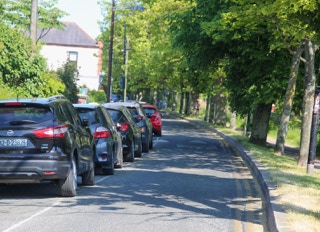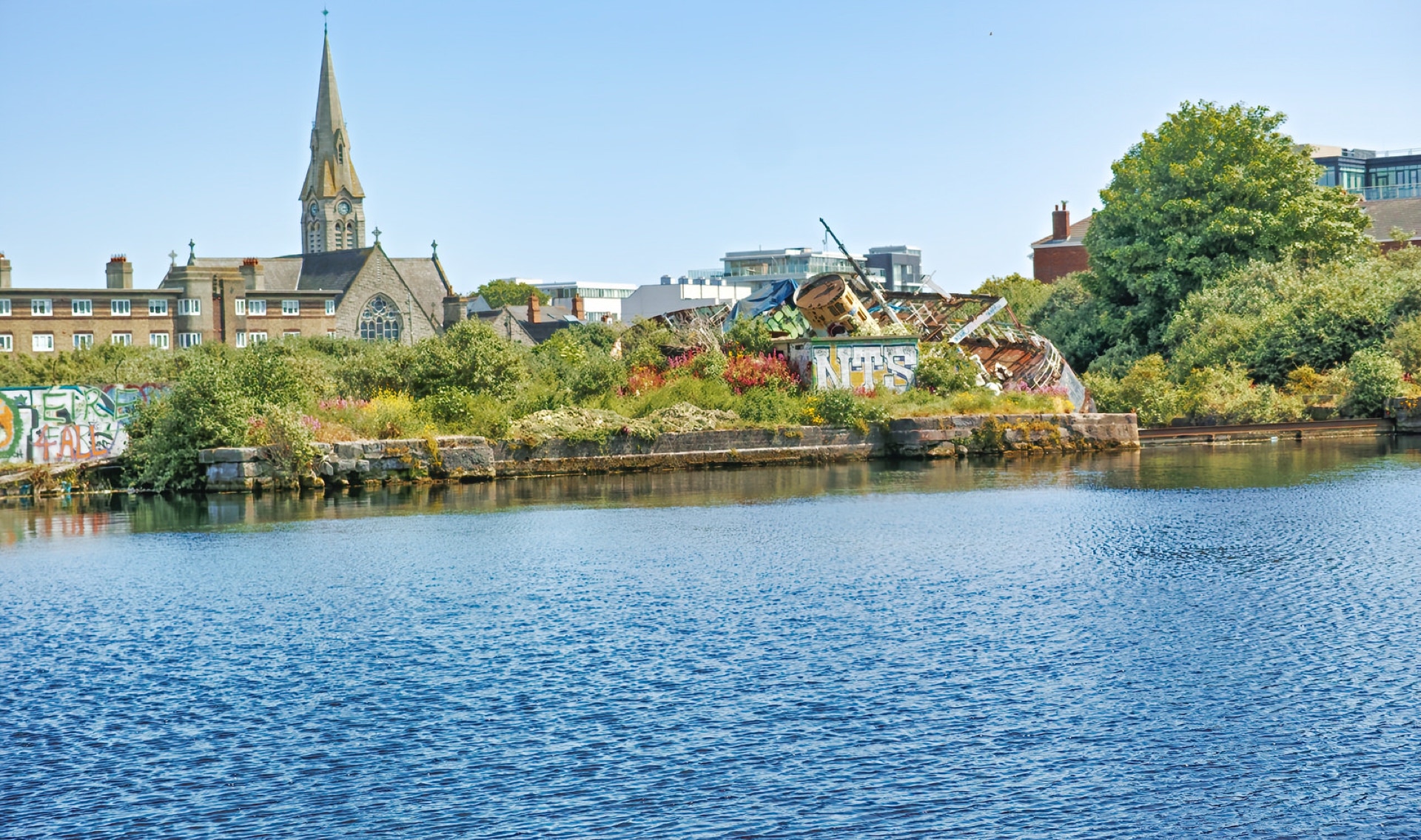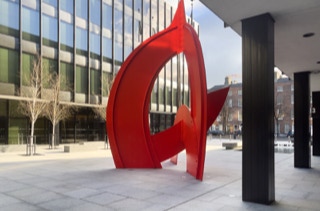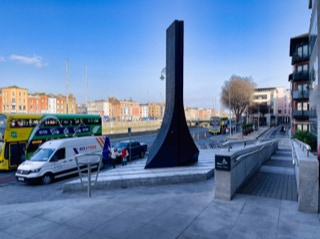The Speech from the Dock
Robert Emmet's speech on the eve of his execution.
My Lords:
What have I to say why sentence of death should not be pronounced on me according to law? I have nothing to say that can alter your predetermination, nor that it will become me to say with any view to the mitigation of that sentence which you are here to pronounce, and I must abide by. But I have that to say which interests me more than life, and which you have labored (as was necessarily your office in the present circumstances of this oppressed country) to destroy. I have much to say why my reputation should be rescued from the load of false accusation and calumny which has been heaped upon it. I do not imagine that, seated where you are, your minds can be so free from impurity as to receive the least impression from what I am going to utter--I have no hopes that I can anchor my character in the breast of a court constituted and trammeled as this is--I only wish, and it is the utmost I expect, that your lordships may suffer it to float down your memories untainted by the foul breath of prejudice, until it finds some more hospitable harbor to shelter it from the storm by which it is at present buffeted.
Was I only to suffer death after being adjudged guilty by your tribunal, I should bow in silence and meet the fate that awaits me without a murmur; but the sentence of law which delivers my body to the executioner will, through the ministry of that law, labor in its own vindication to consign my character to obloquy--for there must be guilt somewhere: whether in the sentence of the court in the catastrophe, posterity must determine. A man in my situation, my lords, has not only to encounter the difficulties of fortune. and the force of power over minds which it has corrupted or subjugated. but the difficulties of established prejudice: the man dies, but his memory lives. That mine may not perish, that it may live in the respect of my countrymen, I seize upon this opportunity to vindicate myself from some of the charges alleged against me. When my spirit shall be wafted to a more friendly port; when my shade shall have joined the bands of those martyred heroes who have shed their blood on the scaffold and in the field, in defense of their country and of virtue. this is my hope: I wish that my memory and name may animate those who survive me, while I look down with complacency on the destruction of that perfidious government which upholds its domination by blasphemy of the Most High-which displays its power over man as over the beasts of the forest-which sets man upon his brother, and lifts his hand in the name of God against the throat of his fellow who believes or doubts a little more or a little less than the government standard--a government which is steeled to barbarity by the cries of the orphans and the tears of the widows which it has made.
[Interruption by the court.]
I appeal to the immaculate God--I swear by the throne of heaven, before which I must shortly appear--by the blood of the murdered patriots who have gone before me that my conduct has been through all this peril and all my purposes governed only by the convictions which I have uttered, and by no other view than that of their cure, and the emancipation of my country from the superinhuman oppression under which she has so long and too patiently travailed; and that I confidently and assuredly hope that, wild and chimerical as it may appear, there is still union and strength in Ireland to accomplish this noble enterprise. of this I speak with the confidence of intimate knowledge, and with the consolation that appertains to that confidence. Think not, my lords, I say this for the petty gratification of giving you a transitory uneasiness; a man who never yet raised his voice to assert a lie will not hazard his character with posterity by asserting a falsehood on a subject so important to his country, and on an occasion like this. Yes. my lords. a man who does not wish to have his epitaph written until his country is liberated will not leave a weapon in the power of envy, nor a pretense to impeach the probity which he means to preserve even in the grave to which tyranny consigns him.
[Interruption by the court.]
Again I say, that what I have spoken was not intended for your lordship, whose situation I commiserate rather than envy-my expressions were for my countrymen; if there is a true Irishman present. let my last words cheer him in the hour of his affliction.
[Interruption by the court.]
I have always understood it to be the duty of a judge. when a prisoner has been convicted, to pronounce the sentence of the law; I have also understood that judges sometimes think it their duty to hear with patience and to speak with humanity. to exhort the victim of the laws. and to offer with tender benignity his opinions of the motives by which he was actuated in the crime, of which he had been adjudged guilty: that a judge has thought it his duty so to have done. I have no doubt--but where is the boasted freedom of your institutions. where is the vaunted impartiality, clemency. and mildness of your courts of justice, if an unfortunate prisoner, whom your policy, and not pure justice. is about to deliver into the hands of the executioner. is not suffered to explain his motives sincerely and truly. and to vindicate the principles by which he was actuated?
My lords, it may be a part of the system of angry justice, to bow a man's mind by humiliation to the purposed ignominy of the scaffold; but worse to me than the purposed shame, or the scaffold's terrors, would be the shame of such unfounded imputations as have been laid against me in this court: you, my lord [Lord Norbury], are a judge. I am the supposed culprit; I am a man, you are a man also; by a revolution of power, we might change places, though we never could change characters; if I stand at the bar of this court and dare not vindicate my character, what a farce is your justice? If I stand at this bar and dare not vindicate my character. flow dare you calumniate it? Does the sentence of death which your unhallowed policy inflicts on my body also condemn my tongue to silence and my reputation to reproach? Your executioner may abridge the period of my existence. but while I exist I shall not forbear to vindicate my character and motives from your aspersions: and as a man to whom fame is dearer than life, I will make the last use of that life in doing justice to that reputation which is to live after me, and which is the only legacy I can leave to those I honor and love, and for whom I am proud to perish. As men, my lord, we must appear at the great day at one common tribunal. and it will then remain for the searcher of all hearts to show a collective universe who was engaged in the most virtuous actions. or actuated by the purest motives-my country's oppressors or--
[Interruption by the court.]
My lord, will a dying man be denied the legal privilege of exculpating himself, in the eyes of the community, of an undeserved reproach thrown upon him during his trial, by charging him with ambition and attempting to cast away, for a paltry consideration. the liberties of his country? Why did your lordship insult me? or rather why insult justice. in demanding of me why sentence of death should not be pronounced? I know, my lord, that form prescribes that you should ask the question; the form also presumes a right of answering. This no doubt may be dispensed with--and so might the whole ceremony of trial, since sentence was already pronounced at the castle, before your jury was impaneled; your lordships are but the priests of the oracle, and I submit; but I insist on the whole of the forms.
I am charged with being an emissary of France An emissary of France? And for what end? It is alleged that I wished to sell the independence of my country? And for what end? Was this the object of my ambition? And is this the mode by which a tribunal of justice reconciles contradictions? No, I am no emissary; and my ambition was to hold a place among the deliverers of my country--not in power, nor in profit, but in the glory of the achievement!...
Connection with Prance was indeed intended, but only as far as mutual interest would sanction or require. Were they to assume any authority inconsistent with the purest independence. it would be the signal for their destruction: we sought aid, and we sought it, as we had assurances we should obtain it--as auxiliaries in war and allies in peace...
I wished to procure for my country the guarantee which Washington procured for America. To procure an aid, which, by its example, would be as important as its valor, disciplined. gallant, pregnant with science and experience; which would perceive the good and polish the rough points of our character. They would come to us as strangers and leave us as friends, after sharing in our perils and elevating our destiny. These were my objects--not to receive new taskmasters hilt to expel old tyrants: these were my views. and these only became Irishmen. It was for these ends I sought aid from France; because France, even as an enemy. could not he more implacable than the enemy already in the bosom of my country.
[Interruption by the court.]
I have been charged with that importance in the efforts to emancipate my country. as to be considered the keystone of the combination of Irishmen; or, as Your Lordship expressed it, "the life and blood of conspiracy." You do me honor overmuch. You have given to the subaltern all the credit of a superior. There are men engaged in this conspiracy, who are not only superior to me but even to your own conceptions of yourself, my lord; men, before the splendor of whose genius and virtues, I should bow with respectful deference, and who would think themselves dishonored to be called your friend--who would not disgrace themselves by shaking your bloodstained hand--
[Interruption by the court]
What, my lord, shall you tell me, on the passage to that scaffold. Which that tyranny. of which you are only the intermediary executioner. Has erected for my murder. that I am accountable for all the blood that has and will be shed in this struggle of the oppressed against the oppressor?--shall you tell me this--and must I be so very a slave as not to repel it?
I do not fear to approach the omnipotent Judge, to answer for the conduct of my whole life; and am I to be appalled and falsified by a mere remnant of mortality here? By you. too. who, if it were possible to collect all the innocent blood that you have shed in your unhallowed ministry, in one great reservoir. Your Lordship might swim in it.
[Interruption by the court.]
Let no man dare, when I am dead. to charge me with dishonor; let no man attaint my memory by believing that I could have engaged in any cause but that of my country's liberty and independence, or that I could have become the pliant minion of power in the oppression or the miseries of my countrymen. The proclamation of the provisional government speaks for our views; no inference can he tortured from it to countenance barbarity or debasement at home, or subjection. humiliation. or treachery from abroad; I would not have submitted to a foreign oppressor for the same reason that I would resist the foreign and domestic oppressor: in the dignity of freedom I would have fought upon the threshold of my country, and its enemy should enter only by passing over my lifeless corpse. Am I, who lived but for my country, and who have subjected myself to the dangers of the jealous and watchful oppressor, and the bondage of the grave, only to give my countrymen their rights, and my country her independence, and am I to be loaded with calumny and not suffered to resent or repel it--no, God forbid!
If the spirits of the illustrious dead participate in the concerns and cares of those who are dear to them in this transitory life--oh, ever dear and venerated shade of my departed father. look down with scrutiny upon the conduct of your suffering son; and see if I have even for a moment deviated from those principles of morality and patriotism which it was your care to instill into my youthful mind, and for which I am now to offer up my life!
My lords, you are impatient for the sacrifice-the blood which you seek is not congealed by the artificial terrors which surround your victim; it circulates warmly and unruffled, through the channels which God created for noble purposes. but which you are bent to destroy. for purposes so grievous. that they cry to heaven. Be yet patient! I have but a few words more to say. I am going to my cold and silent grave: my lamp of life is nearly exinguished: my race is run: the grave opens to receive me, and I sink into its bosom! I have but one request to ask at my departure from this world--it is the charity of its silence! Let no man write my epitaph: for as no man who knows my motives dare now vindicate them. let not prejudice or ignorance asperse them. Let them and me repose in obscurity and peace, and my tomb remain uninscribed, until other times, and other men, can do justice to my character; when my country takes her place among the nations of the earth, then, and not till then, let my epitaph be written. I have done.
![PANORAMIC VIEWS OF DROGHEDA AS IT WAS WAS IN 2011 [PRODUCED USING SONY NEX-5 PANORAMA MODE] 001](images/r/panoramic-views-of-drogheda-as-it-was-was-in-2011-produced-using-sony-nex-5-panorama-mode-224260-1-320.jpg)
![PANORAMIC VIEWS OF DROGHEDA AS IT WAS WAS IN 2011 [PRODUCED USING SONY NEX-5 PANORAMA MODE] 002](images/4/panoramic-views-of-drogheda-as-it-was-was-in-2011-produced-using-sony-nex-5-panorama-mode-224261-1-320.jpg)
![PANORAMIC VIEWS OF DROGHEDA AS IT WAS WAS IN 2011 [PRODUCED USING SONY NEX-5 PANORAMA MODE] 003](images/l/panoramic-views-of-drogheda-as-it-was-was-in-2011-produced-using-sony-nex-5-panorama-mode-224262-1-320.jpg)
![PANORAMIC VIEWS OF DROGHEDA AS IT WAS WAS IN 2011 [PRODUCED USING SONY NEX-5 PANORAMA MODE] 004](images/j/panoramic-views-of-drogheda-as-it-was-was-in-2011-produced-using-sony-nex-5-panorama-mode-224263-1-320.jpg)
![PANORAMIC VIEWS OF DROGHEDA AS IT WAS WAS IN 2011 [PRODUCED USING SONY NEX-5 PANORAMA MODE] 005](images/c/panoramic-views-of-drogheda-as-it-was-was-in-2011-produced-using-sony-nex-5-panorama-mode-224268-1-320.jpg)
![PANORAMIC VIEWS OF DROGHEDA AS IT WAS WAS IN 2011 [PRODUCED USING SONY NEX-5 PANORAMA MODE] 006](images/v/panoramic-views-of-drogheda-as-it-was-was-in-2011-produced-using-sony-nex-5-panorama-mode-224264-1-320.jpg)
![PANORAMIC VIEWS OF DROGHEDA AS IT WAS WAS IN 2011 [PRODUCED USING SONY NEX-5 PANORAMA MODE] 007](images/p/panoramic-views-of-drogheda-as-it-was-was-in-2011-produced-using-sony-nex-5-panorama-mode-224265-1-320.jpg)
![PANORAMIC VIEWS OF DROGHEDA AS IT WAS WAS IN 2011 [PRODUCED USING SONY NEX-5 PANORAMA MODE] 008](images/r/panoramic-views-of-drogheda-as-it-was-was-in-2011-produced-using-sony-nex-5-panorama-mode-224266-1-320.jpg)
![PANORAMIC VIEWS OF DROGHEDA AS IT WAS WAS IN 2011 [PRODUCED USING SONY NEX-5 PANORAMA MODE] 009](images/t/panoramic-views-of-drogheda-as-it-was-was-in-2011-produced-using-sony-nex-5-panorama-mode-224267-1-320.jpg)
![PANORAMIC VIEWS OF DROGHEDA AS IT WAS WAS IN 2011 [PRODUCED USING SONY NEX-5 PANORAMA MODE] 010](images/a/panoramic-views-of-drogheda-as-it-was-was-in-2011-produced-using-sony-nex-5-panorama-mode-224269-1-320.jpg)
![PANORAMIC VIEWS OF DROGHEDA AS IT WAS WAS IN 2011 [PRODUCED USING SONY NEX-5 PANORAMA MODE] 011](images/r/panoramic-views-of-drogheda-as-it-was-was-in-2011-produced-using-sony-nex-5-panorama-mode-224270-1-320.jpg)
![PANORAMIC VIEWS OF DROGHEDA AS IT WAS WAS IN 2011 [PRODUCED USING SONY NEX-5 PANORAMA MODE] 012](images/h/panoramic-views-of-drogheda-as-it-was-was-in-2011-produced-using-sony-nex-5-panorama-mode-224271-1-320.jpg)
![PANORAMIC VIEWS OF DROGHEDA AS IT WAS WAS IN 2011 [PRODUCED USING SONY NEX-5 PANORAMA MODE] 013](images/n/panoramic-views-of-drogheda-as-it-was-was-in-2011-produced-using-sony-nex-5-panorama-mode-224272-1-320.jpg)
![PANORAMIC VIEWS OF DROGHEDA AS IT WAS WAS IN 2011 [PRODUCED USING SONY NEX-5 PANORAMA MODE] 014](images/t/panoramic-views-of-drogheda-as-it-was-was-in-2011-produced-using-sony-nex-5-panorama-mode-224273-1-320.jpg)
![THE BOYNE VIADUCT [A LANDMARK FEATURE] 001](images/n/the-boyne-viaduct-a-landmark-feature-224179-1-320.jpg)
![THE BOYNE VIADUCT [A LANDMARK FEATURE] 002](images/c/the-boyne-viaduct-a-landmark-feature-224180-1-320.jpg)
![THE BOYNE VIADUCT [A LANDMARK FEATURE] 003](images/8/the-boyne-viaduct-a-landmark-feature-224181-1-320.jpg)
![THE BOYNE VIADUCT [A LANDMARK FEATURE] 004](images/4/the-boyne-viaduct-a-landmark-feature-224182-1-320.jpg)
![THE BOYNE VIADUCT [A LANDMARK FEATURE] 005](images/6/the-boyne-viaduct-a-landmark-feature-224183-1-320.jpg)
![THE BOYNE VIADUCT [A LANDMARK FEATURE] 006](images/v/the-boyne-viaduct-a-landmark-feature-224184-1-320.jpg)
![THE BOYNE VIADUCT [A LANDMARK FEATURE] 007](images/j/the-boyne-viaduct-a-landmark-feature-224185-1-320.jpg)
![THE BOYNE VIADUCT [A LANDMARK FEATURE] 008](images/j/the-boyne-viaduct-a-landmark-feature-224186-1-320.jpg)
![THE BOYNE VIADUCT [A LANDMARK FEATURE] 009](images/2/the-boyne-viaduct-a-landmark-feature-224187-1-320.jpg)
![THE BOYNE VIADUCT [A LANDMARK FEATURE] 010](images/8/the-boyne-viaduct-a-landmark-feature-224188-1-320.jpg)
![SWORDS NORMAN CASTLE [I WAS REALLY DISAPPOINTED AS IT CLOSED FIVE MINUTES BEFORE I ARRIVED] 001](images/r/swords-norman-castle-i-was-really-disappointed-as-it-closed-five-minutes-before-i-arrived-222387-1-320.jpg)
![SWORDS NORMAN CASTLE [I WAS REALLY DISAPPOINTED AS IT CLOSED FIVE MINUTES BEFORE I ARRIVED] 002](images/v/swords-norman-castle-i-was-really-disappointed-as-it-closed-five-minutes-before-i-arrived-222386-1-320.jpg)
![SWORDS NORMAN CASTLE [I WAS REALLY DISAPPOINTED AS IT CLOSED FIVE MINUTES BEFORE I ARRIVED] 003](images/j/swords-norman-castle-i-was-really-disappointed-as-it-closed-five-minutes-before-i-arrived-222389-1-320.jpg)
![SWORDS NORMAN CASTLE [I WAS REALLY DISAPPOINTED AS IT CLOSED FIVE MINUTES BEFORE I ARRIVED] 004](images/p/swords-norman-castle-i-was-really-disappointed-as-it-closed-five-minutes-before-i-arrived-222398-1-320.jpg)
![SWORDS NORMAN CASTLE [I WAS REALLY DISAPPOINTED AS IT CLOSED FIVE MINUTES BEFORE I ARRIVED] 005](images/p/swords-norman-castle-i-was-really-disappointed-as-it-closed-five-minutes-before-i-arrived-222388-1-320.jpg)
![SWORDS NORMAN CASTLE [I WAS REALLY DISAPPOINTED AS IT CLOSED FIVE MINUTES BEFORE I ARRIVED] 006](images/t/swords-norman-castle-i-was-really-disappointed-as-it-closed-five-minutes-before-i-arrived-222396-1-320.jpg)
![SWORDS NORMAN CASTLE [I WAS REALLY DISAPPOINTED AS IT CLOSED FIVE MINUTES BEFORE I ARRIVED] 007](images/0/swords-norman-castle-i-was-really-disappointed-as-it-closed-five-minutes-before-i-arrived-222399-1-320.jpg)
![SWORDS NORMAN CASTLE [I WAS REALLY DISAPPOINTED AS IT CLOSED FIVE MINUTES BEFORE I ARRIVED] 008](images/8/swords-norman-castle-i-was-really-disappointed-as-it-closed-five-minutes-before-i-arrived-222394-1-320.jpg)
![SWORDS NORMAN CASTLE [I WAS REALLY DISAPPOINTED AS IT CLOSED FIVE MINUTES BEFORE I ARRIVED] 009](images/r/swords-norman-castle-i-was-really-disappointed-as-it-closed-five-minutes-before-i-arrived-222395-1-320.jpg)
![SWORDS NORMAN CASTLE [I WAS REALLY DISAPPOINTED AS IT CLOSED FIVE MINUTES BEFORE I ARRIVED] 010](images/r/swords-norman-castle-i-was-really-disappointed-as-it-closed-five-minutes-before-i-arrived-222392-1-320.jpg)
![SWORDS NORMAN CASTLE [I WAS REALLY DISAPPOINTED AS IT CLOSED FIVE MINUTES BEFORE I ARRIVED] 011](images/l/swords-norman-castle-i-was-really-disappointed-as-it-closed-five-minutes-before-i-arrived-222397-1-320.jpg)
![SWORDS NORMAN CASTLE [I WAS REALLY DISAPPOINTED AS IT CLOSED FIVE MINUTES BEFORE I ARRIVED] 012](images/e/swords-norman-castle-i-was-really-disappointed-as-it-closed-five-minutes-before-i-arrived-222393-1-320.jpg)
![SWORDS NORMAN CASTLE [I WAS REALLY DISAPPOINTED AS IT CLOSED FIVE MINUTES BEFORE I ARRIVED] 013](images/p/swords-norman-castle-i-was-really-disappointed-as-it-closed-five-minutes-before-i-arrived-222390-1-320.jpg)
![SWORDS NORMAN CASTLE [I WAS REALLY DISAPPOINTED AS IT CLOSED FIVE MINUTES BEFORE I ARRIVED] 014](images/c/swords-norman-castle-i-was-really-disappointed-as-it-closed-five-minutes-before-i-arrived-222385-1-320.jpg)
![SWORDS NORMAN CASTLE [I WAS REALLY DISAPPOINTED AS IT CLOSED FIVE MINUTES BEFORE I ARRIVED] 015](images/6/swords-norman-castle-i-was-really-disappointed-as-it-closed-five-minutes-before-i-arrived-222384-1-320.jpg)
![SWORDS NORMAN CASTLE [I WAS REALLY DISAPPOINTED AS IT CLOSED FIVE MINUTES BEFORE I ARRIVED] 016](images/0/swords-norman-castle-i-was-really-disappointed-as-it-closed-five-minutes-before-i-arrived-222391-1-320.jpg)
![HOWTH RNLI LIFEBOAT STATION [SATURDAY 19 AUGUST] 001](images/8/howth-rnli-lifeboat-station-saturday-19-august-221434-1-320.jpg)
![HOWTH RNLI LIFEBOAT STATION [SATURDAY 19 AUGUST] 002](images/r/howth-rnli-lifeboat-station-saturday-19-august-221439-1-320.jpg)
![HOWTH RNLI LIFEBOAT STATION [SATURDAY 19 AUGUST] 003](images/l/howth-rnli-lifeboat-station-saturday-19-august-221441-1-320.jpg)
![HOWTH RNLI LIFEBOAT STATION [SATURDAY 19 AUGUST] 004](images/0/howth-rnli-lifeboat-station-saturday-19-august-221438-1-320.jpg)
![HOWTH RNLI LIFEBOAT STATION [SATURDAY 19 AUGUST] 005](images/r/howth-rnli-lifeboat-station-saturday-19-august-221433-1-320.jpg)
![HOWTH RNLI LIFEBOAT STATION [SATURDAY 19 AUGUST] 006](images/0/howth-rnli-lifeboat-station-saturday-19-august-221432-1-320.jpg)
![HOWTH RNLI LIFEBOAT STATION [SATURDAY 19 AUGUST] 007](images/0/howth-rnli-lifeboat-station-saturday-19-august-221440-1-320.jpg)
![HOWTH RNLI LIFEBOAT STATION [SATURDAY 19 AUGUST] 008](images/p/howth-rnli-lifeboat-station-saturday-19-august-221437-1-320.jpg)
![HOWTH RNLI LIFEBOAT STATION [SATURDAY 19 AUGUST] 009](images/v/howth-rnli-lifeboat-station-saturday-19-august-221431-1-320.jpg)
![HOWTH RNLI LIFEBOAT STATION [SATURDAY 19 AUGUST] 010](images/e/howth-rnli-lifeboat-station-saturday-19-august-221435-1-320.jpg)
![HOWTH RNLI LIFEBOAT STATION [SATURDAY 19 AUGUST] 011](images/e/howth-rnli-lifeboat-station-saturday-19-august-221436-1-320.jpg)
![SCOUTS DEN IN LEIXLIP [THIS WAS A CHURCH THAT WAS BUILT IN 1750] 001](images/v/scouts-den-in-leixlip-this-was-a-church-that-was-built-in-1750-221132-1-320.jpg)
![SCOUTS DEN IN LEIXLIP [THIS WAS A CHURCH THAT WAS BUILT IN 1750] 002](images/0/scouts-den-in-leixlip-this-was-a-church-that-was-built-in-1750-221133-1-320.jpg)
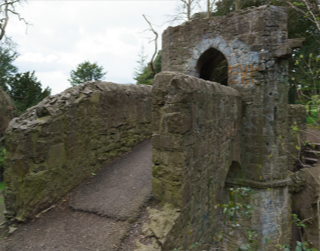






![GRANITE STATUE OF LORD ARDILAUN IN ST STEPHEN'S GREEN [SIR ARTHUR EDWARD GUINNESS] 001](images/8/granite-statue-of-lord-ardilaun-in-st-stephen-s-green-sir-arthur-edward-guinness-219250-1-320.jpg)
![GRANITE STATUE OF LORD ARDILAUN IN ST STEPHEN'S GREEN [SIR ARTHUR EDWARD GUINNESS] 002](images/e/granite-statue-of-lord-ardilaun-in-st-stephen-s-green-sir-arthur-edward-guinness-219247-1-320.jpg)
![GRANITE STATUE OF LORD ARDILAUN IN ST STEPHEN'S GREEN [SIR ARTHUR EDWARD GUINNESS] 003](images/a/granite-statue-of-lord-ardilaun-in-st-stephen-s-green-sir-arthur-edward-guinness-219248-1-320.jpg)
![GRANITE STATUE OF LORD ARDILAUN IN ST STEPHEN'S GREEN [SIR ARTHUR EDWARD GUINNESS] 004](images/c/granite-statue-of-lord-ardilaun-in-st-stephen-s-green-sir-arthur-edward-guinness-219246-1-320.jpg)
![GRANITE STATUE OF LORD ARDILAUN IN ST STEPHEN'S GREEN [SIR ARTHUR EDWARD GUINNESS] 005](images/h/granite-statue-of-lord-ardilaun-in-st-stephen-s-green-sir-arthur-edward-guinness-219249-1-320.jpg)
![GRANITE STATUE OF LORD ARDILAUN IN ST STEPHEN'S GREEN [SIR ARTHUR EDWARD GUINNESS] 006](images/8/granite-statue-of-lord-ardilaun-in-st-stephen-s-green-sir-arthur-edward-guinness-219246-320.jpg)
![PRODUCING A HIGH QUALITY AHSOKA TANO MURAL [CAN TAKE A LOT OF TIME AND EFFORT IF ONE NEEDS TO MEET THE AUGUST 23 DEADLINE] 001](images/l/producing-a-high-quality-ahsoka-tano-mural-can-take-a-lot-of-time-and-effort-if-one-needs-to-meet-the-august-23-deadline-221027-1-320.jpg)
![PRODUCING A HIGH QUALITY AHSOKA TANO MURAL [CAN TAKE A LOT OF TIME AND EFFORT IF ONE NEEDS TO MEET THE AUGUST 23 DEADLINE] 002](images/6/producing-a-high-quality-ahsoka-tano-mural-can-take-a-lot-of-time-and-effort-if-one-needs-to-meet-the-august-23-deadline-221028-1-320.jpg)
![PRODUCING A HIGH QUALITY AHSOKA TANO MURAL [CAN TAKE A LOT OF TIME AND EFFORT IF ONE NEEDS TO MEET THE AUGUST 23 DEADLINE] 003](images/n/producing-a-high-quality-ahsoka-tano-mural-can-take-a-lot-of-time-and-effort-if-one-needs-to-meet-the-august-23-deadline-221029-1-320.jpg)
![PRODUCING A HIGH QUALITY AHSOKA TANO MURAL [CAN TAKE A LOT OF TIME AND EFFORT IF ONE NEEDS TO MEET THE AUGUST 23 DEADLINE] 004](images/6/producing-a-high-quality-ahsoka-tano-mural-can-take-a-lot-of-time-and-effort-if-one-needs-to-meet-the-august-23-deadline-221030-1-320.jpg)
![PRODUCING A HIGH QUALITY AHSOKA TANO MURAL [CAN TAKE A LOT OF TIME AND EFFORT IF ONE NEEDS TO MEET THE AUGUST 23 DEADLINE]](images/h/producing-a-high-quality-ahsoka-tano-mural-can-take-a-lot-of-time-and-effort-if-one-needs-to-meet-the-august-23-deadline-221031-1-320.jpg)
![BUILDINGS INCLUDING GLASSHOUSES [BOTANIC GARDENS IN DUBLIN 21 JUNE 2023] 001](images/4/buildings-including-glasshouses-botanic-gardens-in-dublin-21-june-2023-219005-1-320.jpg)
![BUILDINGS INCLUDING GLASSHOUSES [BOTANIC GARDENS IN DUBLIN 21 JUNE 2023] 002](images/e/buildings-including-glasshouses-botanic-gardens-in-dublin-21-june-2023-219006-1-320.jpg)
![BUILDINGS INCLUDING GLASSHOUSES [BOTANIC GARDENS IN DUBLIN 21 JUNE 2023] 003](images/4/buildings-including-glasshouses-botanic-gardens-in-dublin-21-june-2023-219001-1-320.jpg)
![BUILDINGS INCLUDING GLASSHOUSES [BOTANIC GARDENS IN DUBLIN 21 JUNE 2023] 004](images/n/buildings-including-glasshouses-botanic-gardens-in-dublin-21-june-2023-219002-1-320.jpg)
![BUILDINGS INCLUDING GLASSHOUSES [BOTANIC GARDENS IN DUBLIN 21 JUNE 2023] 005](images/e/buildings-including-glasshouses-botanic-gardens-in-dublin-21-june-2023-219003-1-320.jpg)
![BUILDINGS INCLUDING GLASSHOUSES [BOTANIC GARDENS IN DUBLIN 21 JUNE 2023] 006](images/v/buildings-including-glasshouses-botanic-gardens-in-dublin-21-june-2023-219004-1-320.jpg)
![BUILDINGS INCLUDING GLASSHOUSES [BOTANIC GARDENS IN DUBLIN 21 JUNE 2023] 007](images/t/buildings-including-glasshouses-botanic-gardens-in-dublin-21-june-2023-218997-1-320.jpg)
![BUILDINGS INCLUDING GLASSHOUSES [BOTANIC GARDENS IN DUBLIN 21 JUNE 2023] 008](images/p/buildings-including-glasshouses-botanic-gardens-in-dublin-21-june-2023-218998-1-320.jpg)
![BUILDINGS INCLUDING GLASSHOUSES [BOTANIC GARDENS IN DUBLIN 21 JUNE 2023] 009](images/j/buildings-including-glasshouses-botanic-gardens-in-dublin-21-june-2023-218999-1-320.jpg)
![BUILDINGS INCLUDING GLASSHOUSES [BOTANIC GARDENS IN DUBLIN 21 JUNE 2023] 010](images/c/buildings-including-glasshouses-botanic-gardens-in-dublin-21-june-2023-219000-1-320.jpg)
![BUILDINGS INCLUDING GLASSHOUSES [BOTANIC GARDENS IN DUBLIN 21 JUNE 2023] 011](images/p/buildings-including-glasshouses-botanic-gardens-in-dublin-21-june-2023-218994-1-320.jpg)
![BUILDINGS INCLUDING GLASSHOUSES [BOTANIC GARDENS IN DUBLIN 21 JUNE 2023] 012](images/c/buildings-including-glasshouses-botanic-gardens-in-dublin-21-june-2023-218995-1-320.jpg)
![BUILDINGS INCLUDING GLASSHOUSES [BOTANIC GARDENS IN DUBLIN 21 JUNE 2023] 013](images/v/buildings-including-glasshouses-botanic-gardens-in-dublin-21-june-2023-218996-1-320.jpg)
![BUILDINGS INCLUDING GLASSHOUSES [BOTANIC GARDENS IN DUBLIN 21 JUNE 2023] 014](images/j/buildings-including-glasshouses-botanic-gardens-in-dublin-21-june-2023-218991-1-320.jpg)
![BUILDINGS INCLUDING GLASSHOUSES [BOTANIC GARDENS IN DUBLIN 21 JUNE 2023] 015](images/6/buildings-including-glasshouses-botanic-gardens-in-dublin-21-june-2023-218992-1-320.jpg)
![BUILDINGS INCLUDING GLASSHOUSES [BOTANIC GARDENS IN DUBLIN 21 JUNE 2023] 016](images/n/buildings-including-glasshouses-botanic-gardens-in-dublin-21-june-2023-218993-1-320.jpg)
![BUILDINGS INCLUDING GLASSHOUSES [BOTANIC GARDENS IN DUBLIN 21 JUNE 2023] 017](images/j/buildings-including-glasshouses-botanic-gardens-in-dublin-21-june-2023-218987-1-320.jpg)
![BUILDINGS INCLUDING GLASSHOUSES [BOTANIC GARDENS IN DUBLIN 21 JUNE 2023] 018](images/0/buildings-including-glasshouses-botanic-gardens-in-dublin-21-june-2023-218988-1-320.jpg)
![BUILDINGS INCLUDING GLASSHOUSES [BOTANIC GARDENS IN DUBLIN 21 JUNE 2023] 019](images/a/buildings-including-glasshouses-botanic-gardens-in-dublin-21-june-2023-218989-1-320.jpg)
![BUILDINGS INCLUDING GLASSHOUSES [BOTANIC GARDENS IN DUBLIN 21 JUNE 2023] 020](images/r/buildings-including-glasshouses-botanic-gardens-in-dublin-21-june-2023-218990-1-320.jpg)
![BUILDINGS INCLUDING GLASSHOUSES [BOTANIC GARDENS IN DUBLIN 21 JUNE 2023] 012](images/8/buildings-including-glasshouses-botanic-gardens-in-dublin-21-june-2023-218984-1-320.jpg)
![BUILDINGS INCLUDING GLASSHOUSES [BOTANIC GARDENS IN DUBLIN 21 JUNE 2023] 022](images/h/buildings-including-glasshouses-botanic-gardens-in-dublin-21-june-2023-218986-1-320.jpg)
![BUILDINGS INCLUDING GLASSHOUSES [BOTANIC GARDENS IN DUBLIN 21 JUNE 2023] 023](images/e/buildings-including-glasshouses-botanic-gardens-in-dublin-21-june-2023-218985-1-320.jpg)
![BUILDINGS INCLUDING GLASSHOUSES [BOTANIC GARDENS IN DUBLIN 21 JUNE 2023] 024](images/p/buildings-including-glasshouses-botanic-gardens-in-dublin-21-june-2023-218983-1-320.jpg)
![BUILDINGS INCLUDING GLASSHOUSES [BOTANIC GARDENS IN DUBLIN 21 JUNE 2023] 025](images/e/buildings-including-glasshouses-botanic-gardens-in-dublin-21-june-2023-218982-1-320.jpg)
![BUILDINGS INCLUDING GLASSHOUSES [BOTANIC GARDENS IN DUBLIN 21 JUNE 2023] 026](images/6/buildings-including-glasshouses-botanic-gardens-in-dublin-21-june-2023-218981-1-320.jpg)
![BUILDINGS INCLUDING GLASSHOUSES [BOTANIC GARDENS IN DUBLIN 21 JUNE 2023] 027](images/l/buildings-including-glasshouses-botanic-gardens-in-dublin-21-june-2023-218980-1-320.jpg)
![BUILDINGS INCLUDING GLASSHOUSES [BOTANIC GARDENS IN DUBLIN 21 JUNE 2023] 028](images/r/buildings-including-glasshouses-botanic-gardens-in-dublin-21-june-2023-218979-1-320.jpg)
![BUILDINGS INCLUDING GLASSHOUSES [BOTANIC GARDENS IN DUBLIN 21 JUNE 2023] 029](images/h/buildings-including-glasshouses-botanic-gardens-in-dublin-21-june-2023-218978-1-320.jpg)
![BUILDINGS INCLUDING GLASSHOUSES [BOTANIC GARDENS IN DUBLIN 21 JUNE 2023] 030](images/r/buildings-including-glasshouses-botanic-gardens-in-dublin-21-june-2023-218977-1-320.jpg)
![BUILDINGS INCLUDING GLASSHOUSES [BOTANIC GARDENS IN DUBLIN 21 JUNE 2023] 031](images/r/buildings-including-glasshouses-botanic-gardens-in-dublin-21-june-2023-218976-1-320.jpg)
![BUILDINGS INCLUDING GLASSHOUSES [BOTANIC GARDENS IN DUBLIN 21 JUNE 2023] 032](images/c/buildings-including-glasshouses-botanic-gardens-in-dublin-21-june-2023-218975-1-320.jpg)
![BUILDINGS INCLUDING GLASSHOUSES [BOTANIC GARDENS IN DUBLIN 21 JUNE 2023] 033](images/n/buildings-including-glasshouses-botanic-gardens-in-dublin-21-june-2023-218974-1-320.jpg)
![BUILDINGS INCLUDING GLASSHOUSES [BOTANIC GARDENS IN DUBLIN 21 JUNE 2023] 034](images/j/buildings-including-glasshouses-botanic-gardens-in-dublin-21-june-2023-218973-1-320.jpg)
![BUILDINGS INCLUDING GLASSHOUSES [BOTANIC GARDENS IN DUBLIN 21 JUNE 2023] 035](images/2/buildings-including-glasshouses-botanic-gardens-in-dublin-21-june-2023-218972-1-320.jpg)
![BUILDINGS INCLUDING GLASSHOUSES [BOTANIC GARDENS IN DUBLIN 21 JUNE 2023] 036](images/8/buildings-including-glasshouses-botanic-gardens-in-dublin-21-june-2023-218971-1-320.jpg)
![BUILDINGS INCLUDING GLASSHOUSES [BOTANIC GARDENS IN DUBLIN 21 JUNE 2023] 037](images/h/buildings-including-glasshouses-botanic-gardens-in-dublin-21-june-2023-218970-1-320.jpg)
![BUILDINGS INCLUDING GLASSHOUSES [BOTANIC GARDENS IN DUBLIN 21 JUNE 2023] 038](images/j/buildings-including-glasshouses-botanic-gardens-in-dublin-21-june-2023-218969-1-320.jpg)
![BUILDINGS INCLUDING GLASSHOUSES [BOTANIC GARDENS IN DUBLIN 21 JUNE 2023] 039](images/8/buildings-including-glasshouses-botanic-gardens-in-dublin-21-june-2023-218968-1-320.jpg)
![BUILDINGS INCLUDING GLASSHOUSES [BOTANIC GARDENS IN DUBLIN 21 JUNE 2023] 040](images/6/buildings-including-glasshouses-botanic-gardens-in-dublin-21-june-2023-218967-1-320.jpg)
![BUILDINGS INCLUDING GLASSHOUSES [BOTANIC GARDENS IN DUBLIN 21 JUNE 2023] 041](images/8/buildings-including-glasshouses-botanic-gardens-in-dublin-21-june-2023-218966-1-320.jpg)
![BUILDINGS INCLUDING GLASSHOUSES [BOTANIC GARDENS IN DUBLIN 21 JUNE 2023] 042](images/p/buildings-including-glasshouses-botanic-gardens-in-dublin-21-june-2023-218965-1-320.jpg)
![LOWER DRUMCONDRA ROAD [NOT A BAD AREA TO LIVE IN] 001](images/e/lower-drumcondra-road-not-a-bad-area-to-live-in-218939-1-320.jpg)
![LOWER DRUMCONDRA ROAD [NOT A BAD AREA TO LIVE IN] 002](images/t/lower-drumcondra-road-not-a-bad-area-to-live-in-218938-1-320.jpg)
![LOWER DRUMCONDRA ROAD [NOT A BAD AREA TO LIVE IN] 003](images/l/lower-drumcondra-road-not-a-bad-area-to-live-in-218937-1-320.jpg)
![LOWER DRUMCONDRA ROAD [NOT A BAD AREA TO LIVE IN] 004](images/j/lower-drumcondra-road-not-a-bad-area-to-live-in-218936-1-320.jpg)
![LOWER DRUMCONDRA ROAD [NOT A BAD AREA TO LIVE IN] 005](images/e/lower-drumcondra-road-not-a-bad-area-to-live-in-218935-1-320.jpg)
![LOWER DRUMCONDRA ROAD [NOT A BAD AREA TO LIVE IN] 006](images/a/lower-drumcondra-road-not-a-bad-area-to-live-in-218934-1-320.jpg)
![LOWER DRUMCONDRA ROAD [NOT A BAD AREA TO LIVE IN] 007](images/a/lower-drumcondra-road-not-a-bad-area-to-live-in-218933-1-320.jpg)
![LOWER DRUMCONDRA ROAD [NOT A BAD AREA TO LIVE IN] 008](images/6/lower-drumcondra-road-not-a-bad-area-to-live-in-218932-1-320.jpg)
![LOWER DRUMCONDRA ROAD [NOT A BAD AREA TO LIVE IN] 009](images/a/lower-drumcondra-road-not-a-bad-area-to-live-in-218931-1-320.jpg)
![LOWER DRUMCONDRA ROAD [NOT A BAD AREA TO LIVE IN] 010](images/h/lower-drumcondra-road-not-a-bad-area-to-live-in-218930-1-320.jpg)
![LOWER DRUMCONDRA ROAD [NOT A BAD AREA TO LIVE IN] 011](images/v/lower-drumcondra-road-not-a-bad-area-to-live-in-218928-1-320.jpg)
![LOWER DRUMCONDRA ROAD [NOT A BAD AREA TO LIVE IN] 012](images/j/lower-drumcondra-road-not-a-bad-area-to-live-in-218929-1-320.jpg)
![LOWER DRUMCONDRA ROAD [NOT A BAD AREA TO LIVE IN] 013](images/l/lower-drumcondra-road-not-a-bad-area-to-live-in-218927-1-320.jpg)
![LOWER DRUMCONDRA ROAD [NOT A BAD AREA TO LIVE IN] 014](images/l/lower-drumcondra-road-not-a-bad-area-to-live-in-218926-1-320.jpg)
![LOWER DRUMCONDRA ROAD [NOT A BAD AREA TO LIVE IN] 015](images/2/lower-drumcondra-road-not-a-bad-area-to-live-in-218925-1-320.jpg)
![LOWER DRUMCONDRA ROAD [NOT A BAD AREA TO LIVE IN] 016](images/4/lower-drumcondra-road-not-a-bad-area-to-live-in-218924-1-320.jpg)
![LOWER DRUMCONDRA ROAD [NOT A BAD AREA TO LIVE IN] 017](images/4/lower-drumcondra-road-not-a-bad-area-to-live-in-218923-1-320.jpg)
![LOWER DRUMCONDRA ROAD [NOT A BAD AREA TO LIVE IN] 018](images/8/lower-drumcondra-road-not-a-bad-area-to-live-in-218922-1-320.jpg)
![LOWER DRUMCONDRA ROAD [NOT A BAD AREA TO LIVE IN] 019](images/n/lower-drumcondra-road-not-a-bad-area-to-live-in-218921-1-320.jpg)
![LOWER DRUMCONDRA ROAD [NOT A BAD AREA TO LIVE IN] 020](images/2/lower-drumcondra-road-not-a-bad-area-to-live-in-218920-1-320.jpg)
![LOWER DRUMCONDRA ROAD [NOT A BAD AREA TO LIVE IN] 021](images/r/lower-drumcondra-road-not-a-bad-area-to-live-in-218919-1-320.jpg)
![LOWER DRUMCONDRA ROAD [NOT A BAD AREA TO LIVE IN] 022](images/e/lower-drumcondra-road-not-a-bad-area-to-live-in-218918-1-320.jpg)
![LOWER DRUMCONDRA ROAD [NOT A BAD AREA TO LIVE IN] 023](images/8/lower-drumcondra-road-not-a-bad-area-to-live-in-218917-1-320.jpg)
![LOWER DRUMCONDRA ROAD [NOT A BAD AREA TO LIVE IN] 024](images/n/lower-drumcondra-road-not-a-bad-area-to-live-in-218916-1-320.jpg)
![LOWER DRUMCONDRA ROAD [NOT A BAD AREA TO LIVE IN] 025](images/p/lower-drumcondra-road-not-a-bad-area-to-live-in-218915-1-320.jpg)
![LOWER DRUMCONDRA ROAD [NOT A BAD AREA TO LIVE IN] 026](images/l/lower-drumcondra-road-not-a-bad-area-to-live-in-218914-1-320.jpg)
![THE MARIAN STATUE AT BROADSTONE [HAS IN REALITY BECOME MORE ISOLATED] 001](images/a/the-marian-statue-at-broadstone-has-in-reality-become-more-isolated-218886-1-320.jpg)
![THE MARIAN STATUE AT BROADSTONE [HAS IN REALITY BECOME MORE ISOLATED] 002](images/p/the-marian-statue-at-broadstone-has-in-reality-become-more-isolated-218887-1-320.jpg)
![THE MARIAN STATUE AT BROADSTONE [HAS IN REALITY BECOME MORE ISOLATED] 003](images/e/the-marian-statue-at-broadstone-has-in-reality-become-more-isolated-218891-1-320.jpg)
![THE MARIAN STATUE AT BROADSTONE [HAS IN REALITY BECOME MORE ISOLATED] 004](images/a/the-marian-statue-at-broadstone-has-in-reality-become-more-isolated-218892-1-320.jpg)
![THE MARIAN STATUE AT BROADSTONE [HAS IN REALITY BECOME MORE ISOLATED] 005](images/2/the-marian-statue-at-broadstone-has-in-reality-become-more-isolated-218888-1-320.jpg)
![THE MARIAN STATUE AT BROADSTONE [HAS IN REALITY BECOME MORE ISOLATED] 006](images/l/the-marian-statue-at-broadstone-has-in-reality-become-more-isolated-218940-1-320.jpg)
![THE MARIAN STATUE AT BROADSTONE [HAS IN REALITY BECOME MORE ISOLATED] 007](images/8/the-marian-statue-at-broadstone-has-in-reality-become-more-isolated-218890-1-320.jpg)
![THE MARIAN STATUE AT BROADSTONE [HAS IN REALITY BECOME MORE ISOLATED] 008](images/2/the-marian-statue-at-broadstone-has-in-reality-become-more-isolated-218889-1-320.jpg)
![HISTORIC NORMAN CASTLE IN TRIM COUNTY MEATH [PHOTOGRAPHED 26 DECEMBER 2006] 001](images/h/historic-norman-castle-in-trim-county-meath-photographed-26-december-2006-218662-1-320.jpg)
![HISTORIC NORMAN CASTLE IN TRIM COUNTY MEATH [PHOTOGRAPHED 26 DECEMBER 2006] 002](images/a/historic-norman-castle-in-trim-county-meath-photographed-26-december-2006-218663-1-320.jpg)
![HISTORIC NORMAN CASTLE IN TRIM COUNTY MEATH [PHOTOGRAPHED 26 DECEMBER 2006] 003](images/8/historic-norman-castle-in-trim-county-meath-photographed-26-december-2006-218664-1-320.jpg)
![HISTORIC NORMAN CASTLE IN TRIM COUNTY MEATH [PHOTOGRAPHED 26 DECEMBER 2006] 004](images/0/historic-norman-castle-in-trim-county-meath-photographed-26-december-2006-218665-1-320.jpg)
![HISTORIC NORMAN CASTLE IN TRIM COUNTY MEATH [PHOTOGRAPHED 26 DECEMBER 2006] 005](images/n/historic-norman-castle-in-trim-county-meath-photographed-26-december-2006-218666-1-320.jpg)
![HISTORIC NORMAN CASTLE IN TRIM COUNTY MEATH [PHOTOGRAPHED 26 DECEMBER 2006] 006](images/n/historic-norman-castle-in-trim-county-meath-photographed-26-december-2006-218667-1-320.jpg)
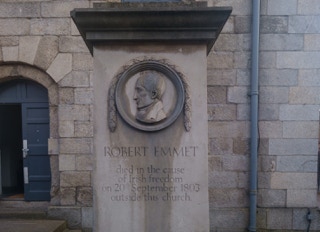

![I HIGHLY RECOMMEND THIS SMALL PUBLIC PARK [HAROLD'S CROSS] 001](images/2/i-highly-recommend-this-small-public-park-harold-s-cross-218438-1-320.jpg)
![I HIGHLY RECOMMEND THIS SMALL PUBLIC PARK [HAROLD'S CROSS] 002](images/2/i-highly-recommend-this-small-public-park-harold-s-cross-218439-1-320.jpg)
![I HIGHLY RECOMMEND THIS SMALL PUBLIC PARK [HAROLD'S CROSS] 003](images/r/i-highly-recommend-this-small-public-park-harold-s-cross-218440-1-320.jpg)
![I HIGHLY RECOMMEND THIS SMALL PUBLIC PARK [HAROLD'S CROSS] 004](images/r/i-highly-recommend-this-small-public-park-harold-s-cross-218441-1-320.jpg)
![I HIGHLY RECOMMEND THIS SMALL PUBLIC PARK [HAROLD'S CROSS] 005](images/0/i-highly-recommend-this-small-public-park-harold-s-cross-218443-1-320.jpg)
![I HIGHLY RECOMMEND THIS SMALL PUBLIC PARK [HAROLD'S CROSS] 006](images/j/i-highly-recommend-this-small-public-park-harold-s-cross-218446-1-320.jpg)
![I HIGHLY RECOMMEND THIS SMALL PUBLIC PARK [HAROLD'S CROSS] 007](images/a/i-highly-recommend-this-small-public-park-harold-s-cross-218448-1-320.jpg)
![I HIGHLY RECOMMEND THIS SMALL PUBLIC PARK [HAROLD'S CROSS] 008](images/2/i-highly-recommend-this-small-public-park-harold-s-cross-218442-1-320.jpg)
![I HIGHLY RECOMMEND THIS SMALL PUBLIC PARK [HAROLD'S CROSS] 009](images/l/i-highly-recommend-this-small-public-park-harold-s-cross-218444-1-320.jpg)
![I HIGHLY RECOMMEND THIS SMALL PUBLIC PARK [HAROLD'S CROSS] 010](images/6/i-highly-recommend-this-small-public-park-harold-s-cross-218445-1-320.jpg)
![I HIGHLY RECOMMEND THIS SMALL PUBLIC PARK [HAROLD'S CROSS] 011](images/r/i-highly-recommend-this-small-public-park-harold-s-cross-218447-1-320.jpg)
![I HIGHLY RECOMMEND THIS SMALL PUBLIC PARK [HAROLD'S CROSS] 012](images/v/i-highly-recommend-this-small-public-park-harold-s-cross-218449-1-320.jpg)
![I HIGHLY RECOMMEND THIS SMALL PUBLIC PARK [HAROLD'S CROSS] 013](images/p/i-highly-recommend-this-small-public-park-harold-s-cross-218450-1-320.jpg)
![I HIGHLY RECOMMEND THIS SMALL PUBLIC PARK [HAROLD'S CROSS] 014](images/8/i-highly-recommend-this-small-public-park-harold-s-cross-218451-1-320.jpg)
![CHRIST CHURCH CATHEDRAL [WINETAVERN STREET - ST MICHAELS HILL] 001](images/c/christ-church-cathedral-winetavern-street-st-michaels-hill-218430-1-320.jpg)
![CHRIST CHURCH CATHEDRAL [WINETAVERN STREET - ST MICHAELS HILL] 002](images/v/christ-church-cathedral-winetavern-street-st-michaels-hill-218432-1-320.jpg)
![CHRIST CHURCH CATHEDRAL [WINETAVERN STREET - ST MICHAELS HILL] 003](images/h/christ-church-cathedral-winetavern-street-st-michaels-hill-218433-1-320.jpg)
![CHRIST CHURCH CATHEDRAL [WINETAVERN STREET - ST MICHAELS HILL] 004](images/r/christ-church-cathedral-winetavern-street-st-michaels-hill-218434-1-320.jpg)
![CHRIST CHURCH CATHEDRAL [WINETAVERN STREET - ST MICHAELS HILL] 005](images/j/christ-church-cathedral-winetavern-street-st-michaels-hill-218427-1-320.jpg)
![CHRIST CHURCH CATHEDRAL [WINETAVERN STREET - ST MICHAELS HILL] 006](images/l/christ-church-cathedral-winetavern-street-st-michaels-hill-218428-1-320.jpg)
![CHRIST CHURCH CATHEDRAL [WINETAVERN STREET - ST MICHAELS HILL] 007](images/r/christ-church-cathedral-winetavern-street-st-michaels-hill-218429-1-320.jpg)
![CHRIST CHURCH CATHEDRAL [WINETAVERN STREET - ST MICHAELS HILL] 008](images/v/christ-church-cathedral-winetavern-street-st-michaels-hill-218431-1-320.jpg)
